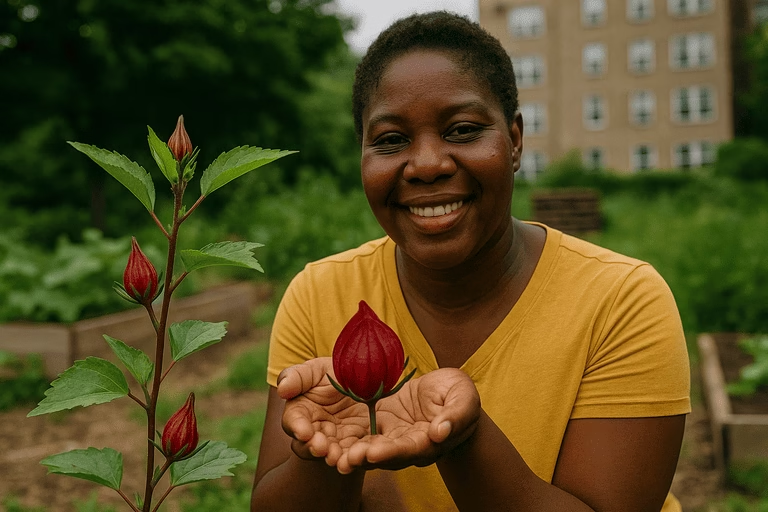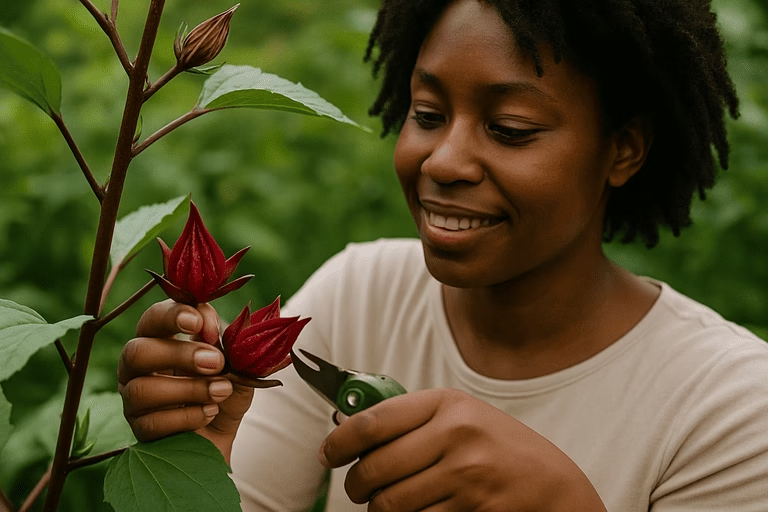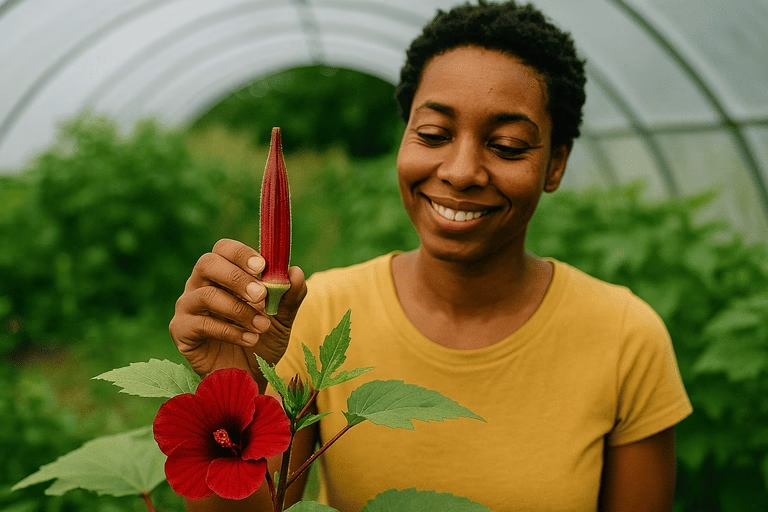Survival in the wild isn’t just about staying alive—it’s about finding resources that support your health and energy. That’s why edible hibiscus plants are gaining popularity among foragers and outdoor survivalists. These vibrant blooms offer more than just visual appeal; they’re packed with nutrients and can be used in a variety of ways. From petals to leaves, different parts of the plant offer hydration, flavor, and even medicinal properties. In addition, hibiscus is easy to identify, making it a safe and rewarding addition to your foraging knowledge base.
Unlike many wild edibles that require complex preparation, hibiscus can be consumed in its raw form or brewed into teas. The tart flavor of the petals is not only refreshing but also rich in antioxidants like vitamin C. Therefore, whether you’re navigating a multi-day hike or surviving off-grid, adding hibiscus to your diet can provide both immediate and long-term benefits. For any wilderness enthusiast, this is one plant worth recognizing—and respecting.
Identifying Edible Hibiscus Plants in the Wild
Before consuming any wild plant, correct identification is essential. Fortunately, edible hibiscus plants are among the easier species to recognize. The most well-known variety is Hibiscus sabdariffa, commonly called roselle. It features deep red stems and calyces with broad, serrated green leaves. Other edible varieties include Hibiscus acetosella (red leaf hibiscus) and Hibiscus rosa-sinensis (common tropical hibiscus), though flavor and uses may vary.
Edible Lavender Plants for Culinary Delights
Look for plants growing in warm, humid climates—often in open fields, along trails, or near water sources. In addition, observe the shape and color of the flowers. Edible hibiscus usually has five large petals with a prominent central stamen and a wide range of colors including red, pink, yellow, and white. Always avoid lookalikes with small or irregular flowers, and confirm identification with a reliable field guide before consuming. Being cautious doesn’t slow you down—it keeps you alive.

How to Harvest and Store Edible Hibiscus Plants
Knowing how to correctly harvest edible hibiscus plants ensures you get the most value without damaging the ecosystem. Begin by collecting petals and calyces early in the morning, when their moisture content is highest. Use clean, sharp scissors or your fingers to gently remove them. Avoid stripping too much from one plant; instead, harvest from multiple sources to support regrowth and biodiversity.
In addition, be mindful of your handling. Store your harvest in a breathable basket or mesh bag to prevent wilting. Once back at camp or home, dry the petals in a shaded, well-ventilated area. This preserves both flavor and nutrition. Dried hibiscus can be stored in airtight containers for months, ready to be used in teas, sauces, or herbal remedies. Proper harvesting and storage not only make your supply last but also show respect for the natural world that sustains you.
Creative Ways to Use Edible Hibiscus Plants
The versatility of edible hibiscus plants makes them a staple for both wilderness survival and everyday nutrition. One of the most popular uses is hibiscus tea, which is made by steeping dried petals in hot water. This beverage is not only flavorful but also known to help reduce blood pressure and support immune function. For example, a cup of chilled hibiscus tea can be a life-saver on a hot day in the field.
In addition, the petals can be added to wild salads, giving them a bright color and a tangy twist. You can also cook hibiscus down into syrups, jams, or even use it to flavor fermented drinks like kombucha. In survival scenarios, even the leaves of certain hibiscus varieties can be boiled or sautéed like spinach. Therefore, the plant provides food, hydration, and medicine—all in one natural package.
Edible Hibiscus Plants and Their Medicinal Benefits
Beyond their culinary value, edible hibiscus plants offer numerous medicinal benefits, especially useful in a wilderness survival context. Traditionally used in many cultures, hibiscus has been praised for its ability to lower blood pressure, improve liver function, and reduce inflammation. These effects come from bioactive compounds like flavonoids and anthocyanins, which are abundant in the petals.
Wild Food as a Gateway to Self-Reliance and Natural Living
For instance, a mild hibiscus infusion can help soothe sore throats, support digestion, and even act as a natural diuretic. In addition, the plant’s antibacterial properties make it helpful for minor wounds when crushed and applied topically. While hibiscus is not a substitute for proper medical care, having access to such a multipurpose plant can greatly enhance your wilderness toolkit. Knowledge of these natural remedies is one more way to stay resilient when resources are limited.

Growing Hibiscus in Your Survival Garden
If you prefer to cultivate rather than forage, hibiscus is surprisingly easy to grow. It thrives in full sun, well-drained soil, and warm climates, although certain varieties tolerate cooler weather. Whether you’re homesteading or preparing a backyard survival garden, hibiscus is a valuable crop that offers beauty, nourishment, and medicine.
Start your plants from seed or cuttings, and give them space to grow—some types can reach over six feet in height. In addition, regular pruning encourages bushier growth and more blooms. The more flowers your plants produce, the more you’ll be able to harvest. Including edible hibiscus plants in your home garden isn’t just a visual upgrade—it’s a step toward greater food independence.
Common Mistakes to Avoid When Using Wild Plants
Even experienced foragers can make mistakes when using wild plants. Misidentification is the most serious risk, so always double-check with multiple sources. Another common error is assuming that all hibiscus varieties are safe to eat. In truth, while many are edible, some ornamental types are not intended for consumption and may have been treated with pesticides or chemical fertilizers.
Overharvesting is another issue, especially in sensitive ecosystems. Always practice ethical gathering by leaving enough plants behind to support pollinators and natural regrowth. Furthermore, never forage in areas that may be contaminated with road runoff or industrial waste. In addition, improperly storing your harvest can lead to mold or loss of nutrients. A careful approach ensures that your use of edible hibiscus plants remains sustainable and safe for everyone involved.
How to Combine Hibiscus with Other Wild Ingredients
One of the most enjoyable aspects of wild food preparation is learning how ingredients complement each other. Hibiscus pairs well with a variety of wild edibles. For example, you can mix hibiscus petals with wild mint for a cooling tea or blend them with wild berries to create a vitamin-rich jam. The tart flavor of hibiscus contrasts beautifully with sweet or creamy elements, making it versatile in both drinks and dishes.
You can also combine hibiscus leaves with wild greens like chickweed or purslane to make nutrient-packed stir-fries. In addition, try mixing dried hibiscus with pine needles for a powerful immunity-boosting tea. Experimenting with pairings expands your wild food repertoire and adds variety to your survival menu. Learning to harmonize flavors in the field is just another layer of wilderness self-reliance.
Preserving Hibiscus for Long-Term Storage
Preservation is key when you’re living off the land. Fortunately, hibiscus dries well and retains much of its flavor and medicinal quality over time. Spread petals in a single layer on a mesh rack or screen in a dry, shaded space with good air circulation. Avoid using ovens or artificial heat, as this can degrade valuable nutrients.
Earthquake Survival Kit: Prepare for Emergencies
Once completely dry, store the petals in airtight containers away from light and moisture. You can also grind dried hibiscus into powder for use in teas, baking, or natural dyes. Label your containers with the date and variety for future reference. With proper storage, your edible hibiscus plants can support your health and nutrition long after the blooming season ends.

Quick Recap
Let’s revisit everything you’ve learned in this complete guide to edible hibiscus plants, optimized for survivalists and wild food explorers alike.
We began by exploring the plant’s value in the wild—its vibrant flowers, antioxidant-rich petals, and natural medicinal uses. You learned how to properly identify edible hibiscus species, and why verifying your find before consumption is critical. We also walked through ethical harvesting techniques and smart storage methods to extend shelf life without sacrificing quality.
You discovered several creative uses for hibiscus—from refreshing teas and survival jams to antiseptic poultices and wild salads. In addition, we highlighted its many medicinal properties, such as lowering blood pressure, aiding digestion, and boosting immunity. Then, we discussed how to grow hibiscus at home as part of a sustainable garden plan. Alongside that, we addressed common mistakes to avoid and offered ideas for pairing hibiscus with other wild ingredients to enhance both flavor and nutrition.
Finally, we covered effective long-term preservation strategies to ensure your supply lasts throughout the year. Altogether, edible hibiscus plants are not just beautiful—they’re practical, powerful, and perfectly suited for anyone serious about self-reliance and wild living.
By including hibiscus in your survival strategy, you’re not just eating smarter—you’re living closer to nature, drawing on generations of ancestral knowledge, and building a skillset that can sustain you wherever life takes you.

